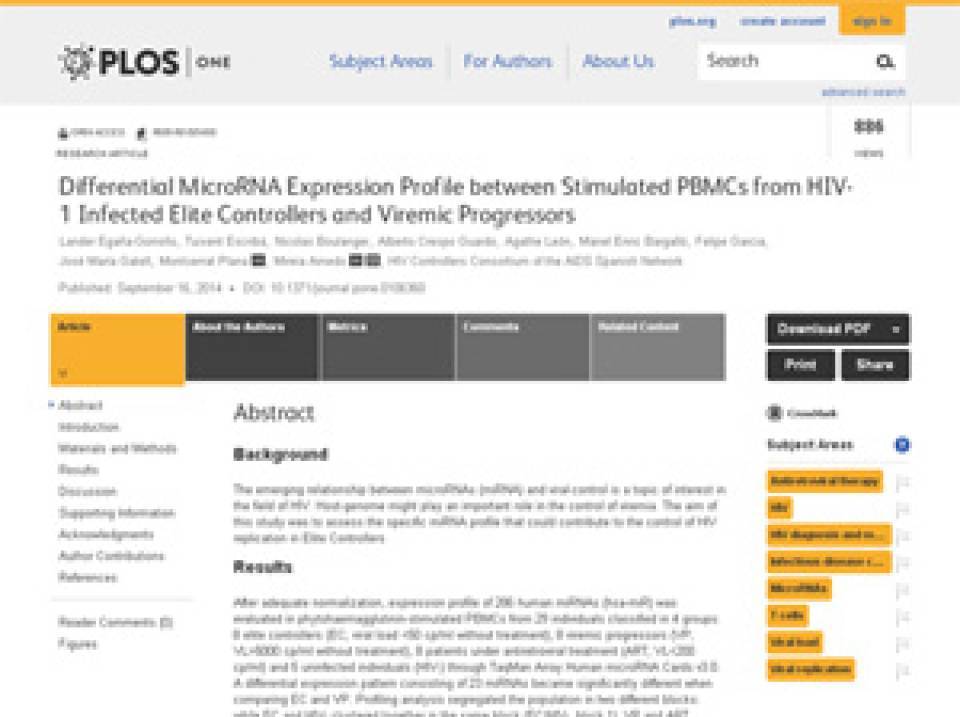The discovery of microRNAs, small non-coding RNA molecules containing between 19 and 25 nucleotides, opened a new field of research and showed the opportunity to identify miRNA profiles in the context of diseases such as HIV. So far, several miRNAs that interact with the immune system related genes or the viral genes have been identified. Then, finding out how a specific miRNA profile may influence the different disease progression can be useful to understand the basis of viral and immune control and the design of future therapeutic strategies.
To know if the EC have a differential profile of miRNAs, the researchers evaluated the expression profile of 286 miRNAs in 29 patients: 8 EC, 8 patients with the disease but without treatment, eight patients under antiretroviral treatment and 5 uninfected individuals. They found that there was a differential expression pattern consisting in 23 miRNAs, in similar levels to uninfected individuals, but differently expressed in infected patients.
Four of these miRNAs, involved in the control of viral replication and infectivity, were up-expressed in EC and uninfected individuals. The other 19 were up-expressed in all the patients infected (with or without antiretroviral treatment) and, interestingly, it is known that two of these miRNAs are associated with activation of the immune system with a high viral load.
With these results, further studies will have to be conducted to determine the significance of the role of these miRNAs in different stages of infection and their role as a target to predict the progression of disease or in the design of new therapeutic strategies.
Article reference:
Lander Egaña-Gorroño, Tuixent Escribà, Nicolas Boulanger, Alberto Crespo Guardo, Agathe León, Manel Enric Bargalló, Felipe Garcia, José María Gatell, Montserrat Plana, Mireia Arnedo, HIV Controllers Consortium of the AIDS Spanish Network Research Article | published 16 Sep 2014 | PLOS ONE10.1371/journal.pone.0106360

